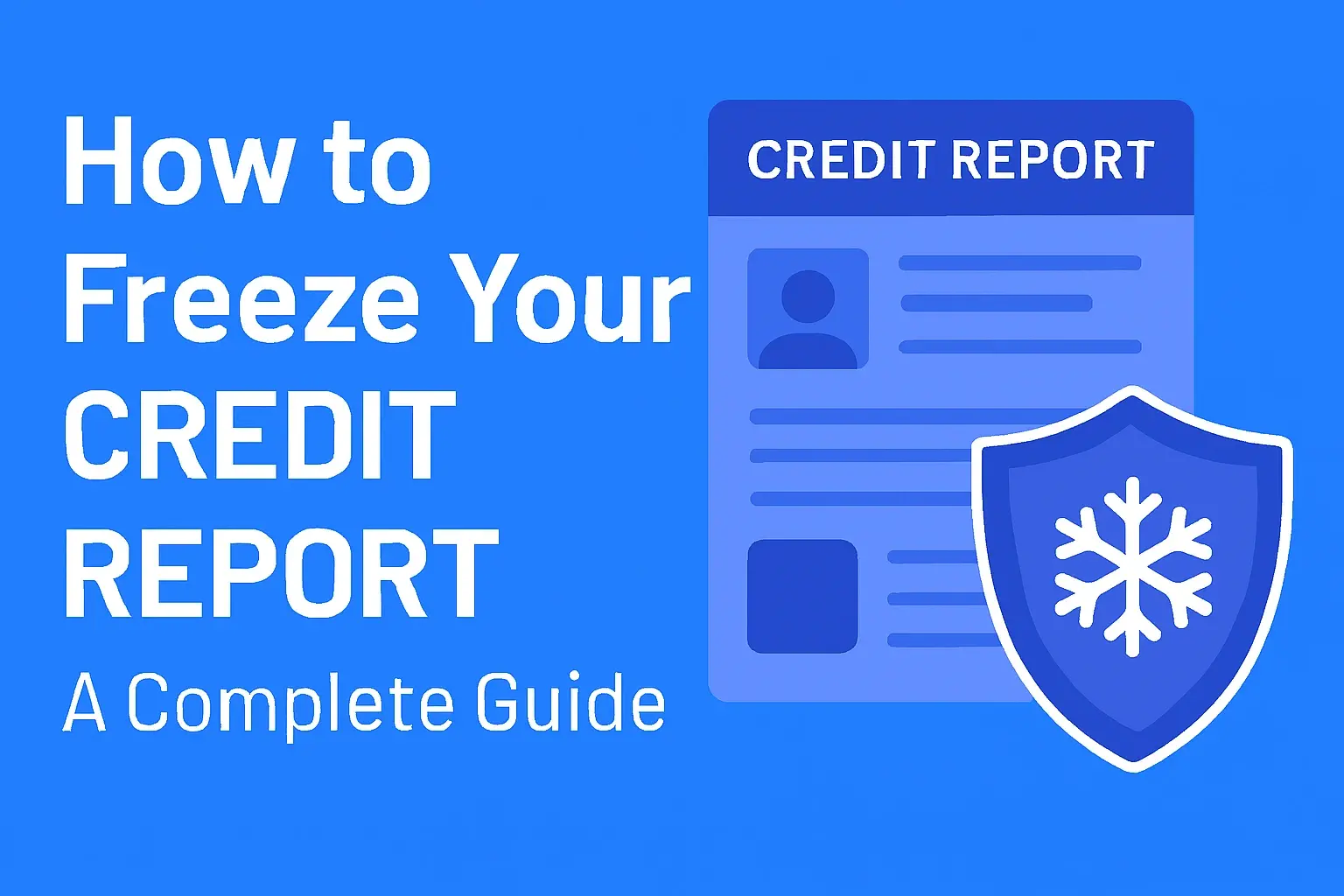-
Posted on: 26 Jul 2024

-
Looking to improve your credit score quickly? This guide offers actionable strategies to clean your credit report fast, helping you achieve your financial goals sooner. We'll break down the most effective methods for disputing errors and managing your credit effectively in 2025.
Understanding Your Credit Report
Your credit report is a detailed history of your borrowing and repayment activities. It's compiled by credit bureaus – Experian, Equifax, and TransUnion – and used by lenders to assess your creditworthiness. A clean credit report is crucial for securing loans, mortgages, credit cards, and even rental agreements or insurance policies. Understanding its components is the first step toward effectively cleaning it.
Key Components of a Credit Report
A typical credit report includes:
- Personal Information: Your name, address, Social Security number, and employment history.
- Credit Accounts: Details of all your credit cards, loans (mortgages, auto loans, student loans), and lines of credit. This includes the lender, account number, date opened, credit limit, current balance, and payment history.
- Public Records: Information on bankruptcies, liens, and judgments.
- Credit Inquiries: A list of entities that have recently requested your credit report. Hard inquiries, which occur when you apply for credit, can slightly lower your score, while soft inquiries (like checking your own report) do not.
The Role of Credit Scores
While your credit report provides the raw data, your credit score is a three-digit number that summarizes this data, predicting your likelihood to repay debt. The most common scoring model is FICO, with scores typically ranging from 300 to 850. A higher score indicates lower risk to lenders, leading to better interest rates and loan terms. For instance, in 2025, individuals with FICO scores above 740 often qualify for the best mortgage rates, potentially saving tens of thousands of dollars over the life of a loan.
Understanding these components empowers you to identify potential inaccuracies or negative items that might be dragging down your score. The faster you can identify and address these issues, the quicker you can see improvements.
Why Cleaning Your Credit Report Matters
A clean credit report isn't just about vanity; it has tangible financial implications. In today's economic landscape of 2025, a strong credit profile can unlock significant financial advantages, while a damaged one can create substantial hurdles.
Impact on Loan Approvals and Interest Rates
Lenders use your credit report and score to determine whether to approve your applications for credit and at what interest rate. A clean report signals reliability and responsible financial behavior. For example, a person with excellent credit (780+) might secure an auto loan at 3.5% APR, while someone with poor credit (below 600) might face rates as high as 18% or more. This difference can amount to thousands of dollars in extra interest payments over the loan term.
Access to Housing and Rental Opportunities
Landlords frequently check credit reports before approving rental applications. A history of late payments or evictions can make it difficult to secure housing. In competitive rental markets, a clean credit report can be the deciding factor between getting approved for your dream apartment or being passed over.
Employment and Insurance Benefits
Some employers, particularly in financial services or positions of trust, may review credit reports as part of their background checks. Additionally, insurance companies in many states use credit-based insurance scores to help determine premiums for auto and homeowners insurance. A better credit profile can lead to lower insurance costs, saving policyholders money in 2025.
Overall Financial Freedom
Ultimately, a clean credit report provides greater financial freedom. It opens doors to better financial products, lower costs, and a smoother path to achieving major life goals like buying a home or starting a business. The effort invested in cleaning your credit report can yield substantial long-term rewards.
The Fastest Ways to Clean Your Credit Report
When aiming to clean your credit report "fast," the focus shifts to the most impactful and time-efficient strategies. While credit repair is often a marathon, certain actions can accelerate the process significantly. These methods prioritize accuracy, direct communication, and strategic financial adjustments.
1. Obtain and Review Your Credit Reports from All Three Bureaus
The first and most critical step is to get your credit reports from Experian, Equifax, and TransUnion. You are entitled to a free report from each bureau annually via AnnualCreditReport.com. Some services also offer them more frequently. A thorough review is essential, as errors are common and can significantly impact your score.
2. Dispute Inaccurate Information Immediately
This is arguably the most powerful tool for fast credit cleaning. If you find any errors – incorrect late payments, accounts that aren't yours, wrong balances, or outdated negative information – you must dispute them with the credit bureaus and the original creditors. The Fair Credit Reporting Act (FCRA) mandates that bureaus investigate disputes within 30 days (or 45 days for initial reports). This 30-day window is the key to rapid improvement.
3. Negotiate with Creditors for Pay-for-Delete Agreements
For legitimate negative items that you cannot dispute (like late payments on an account you legitimately held), you can try to negotiate with the creditor. A "pay-for-delete" agreement involves paying a settled amount on a debt in exchange for the creditor agreeing to remove the negative entry from your credit report. While not guaranteed and not offered by all creditors, it can be a very effective fast-track method if successful.
4. Address Collections Accounts Strategically
Collection accounts can severely damage your credit. If you have old collection accounts, understand their status. If they are past the statute of limitations for lawsuits, they may still be reportable for up to seven years from the original delinquency date. You can attempt to negotiate a settlement, ideally with a pay-for-delete clause, or wait for them to age off your report if they are nearing the seven-year mark.
5. Pay Down High Credit Card Balances
Your credit utilization ratio (CUR) – the amount of credit you're using compared to your total available credit – is a major factor in your credit score. Aim to keep your CUR below 30%, and ideally below 10%, on each card and overall. Paying down balances, especially on high-utilization cards, can lead to a rapid score increase.
6. Become an Authorized User (with Caution)
If you have a trusted friend or family member with excellent credit, they can add you as an authorized user to their credit card. Their positive payment history and low utilization can then appear on your report, potentially boosting your score. However, if they miss payments or have high balances, it can hurt your credit.
7. Ensure All Bills Are Paid On Time Moving Forward
While this is a long-term strategy, it's crucial for preventing further damage and building positive history. Even one missed payment can significantly drop your score. Prioritize on-time payments for all your accounts to solidify any gains made through other methods.
By focusing on these high-impact actions, you can create a concentrated effort to clean your credit report and see noticeable improvements in a shorter timeframe. The speed of improvement often depends on the severity of the issues on your report and your ability to resolve them effectively.
Disputing Errors: The Cornerstone of Fast Credit Cleaning
Errors on credit reports are surprisingly common, and they can unfairly drag down your credit score. The Fair Credit Reporting Act (FCRA) gives consumers the right to dispute any information they believe is inaccurate or incomplete. This process, when executed correctly, is one of the most powerful and fastest ways to improve your credit.
Types of Common Credit Report Errors
Before you can dispute, you need to know what to look for. Common errors include:
- Incorrect Personal Information: Wrong addresses, incorrect Social Security numbers, or accounts belonging to someone with a similar name.
- Accounts You Don't Recognize: This could be identity theft or a clerical error where an account from another person is attributed to you.
- Incorrect Payment Status: Accounts marked as late when payments were made on time, or accounts showing a balance when they should be zero.
- Duplicate Entries: The same debt or account listed multiple times.
- Outdated Negative Information: Negative items like bankruptcies or collections that should have fallen off your report by now (typically seven years, or 10 for a Chapter 7 bankruptcy).
- Incorrect Credit Limits or Balances: Misreported credit limits or current balances that don't reflect recent payments.
The Step-by-Step Dispute Process
Cleaning your credit report fast hinges on an efficient and thorough dispute process. Here’s how to do it:
Step 1: Gather Your Evidence
Collect all documentation that proves the information is inaccurate. This could include:
- Bank statements showing proof of payment.
- Correspondence with the creditor.
- Court records (if applicable).
- Your credit report itself, clearly highlighting the error.
Step 2: Write a Dispute Letter
You can dispute online, by phone, or by mail. However, for a documented, traceable record, a written letter is often preferred, especially for complex disputes. Address your letter to the credit bureau(s) where the error appears.
Your letter should:
- Clearly state your name, address, and Social Security number.
- Identify the specific account or item you are disputing.
- Explain why you believe the information is inaccurate.
- Reference your supporting documentation.
- Request that the inaccurate information be removed from your report.
Example Snippet for Dispute Letter:
"I am writing to dispute the accuracy of the account listed under account number [Account Number] from [Creditor Name]. My credit report indicates this account has a late payment on [Date], however, I have attached a copy of my bank statement showing payment was made on [Date] via [Payment Method]. I request that this inaccurate late payment notation be removed from my credit report."
Step 3: Send Your Letter (Certified Mail Recommended)
Send your letter via certified mail with a return receipt requested. This provides proof that the credit bureau received your dispute and when. You will typically send the dispute to the address provided by the credit bureau for disputes. For example, Experian's address for disputes is often found on their website.
Step 4: The Bureau's Investigation
Under the FCRA, credit bureaus have 30 days to investigate your dispute. They will contact the creditor or data furnisher (the entity that provided the information) to verify the accuracy of the disputed item. The creditor must respond with information supporting the accuracy of the disputed item. If they cannot verify it, the information must be removed.
Step 5: Review the Results
After the investigation, the credit bureau will send you an updated credit report and a letter detailing the results of their investigation. If the disputed item was removed or corrected, you'll see the improvement reflected in your score. If the item remains, and you still believe it's inaccurate, you can file a second dispute, providing new evidence if available.
Disputing Directly with Creditors
In addition to disputing with the bureaus, it's often effective to dispute directly with the original creditor or furnisher of the information. This can sometimes expedite the process, as the creditor is the source of the data. Follow a similar letter-writing process, clearly stating the error and providing evidence.
Leveraging Credit Monitoring Services
While not a direct cleaning method, credit monitoring services can alert you to new errors or negative information as it appears on your reports, allowing you to dispute them more quickly. Some services also offer dispute assistance.
By diligently disputing every inaccuracy, you are directly addressing the negative elements that are most likely to be removed quickly, thereby accelerating your credit report cleaning process.
Negotiating with Creditors for Swift Resolution
When errors aren't the issue, but rather legitimate negative marks like late payments or outstanding balances, negotiation becomes your most potent tool for fast credit improvement. This approach requires tact, preparation, and a clear understanding of your goals.
The Power of Negotiation: Pay-for-Delete Agreements
A "pay-for-delete" agreement is a negotiation where you agree to pay a debt (often a settled amount less than the full balance) in exchange for the creditor or collection agency agreeing to remove the negative entry entirely from your credit report. This is highly effective because it removes the negative mark rather than just showing it as paid or settled, which can still impact your score.
When to Pursue Pay-for-Delete
- Collection Accounts: These are prime candidates for pay-for-delete negotiations. Collection agencies often buy debt for pennies on the dollar and are more willing to negotiate to recover some funds.
- Older Debts: If a debt is nearing the end of its reporting period (e.g., 5-6 years old), a creditor might be more amenable to a pay-for-delete to get some payment before it ages off naturally.
- Legitimate but Damaging Marks: If you cannot dispute a legitimate negative mark (like a late payment on an account you owned), and it's significantly hurting your score, a pay-for-delete can be a strategic move.
How to Negotiate a Pay-for-Delete
- Identify the Debt: Know exactly which debt you want to negotiate.
- Contact the Creditor/Agency: Reach out to the original creditor or the collection agency reporting the debt.
- Make an Offer: Start with a lower offer than they might expect. Be prepared to justify your offer based on the age of the debt or your current financial situation.
- Get it in Writing: This is paramount. NEVER agree to pay anything without a written agreement that explicitly states the debt will be removed from your credit report. Verbal agreements are unenforceable and often ignored.
- Send Payment: Once you have the written agreement, send your payment as agreed.
- Follow Up: After payment, wait 30-45 days and then check your credit report to ensure the item has been removed. If not, refer back to your written agreement.
Settling Debts Without Deletion
If a creditor or collection agency refuses to agree to a pay-for-delete, your next best option is to negotiate a settlement. This means paying a lump sum that is less than the full amount owed to satisfy the debt. While the negative mark will remain on your report, it will be updated to show "settled for less than full amount" or "paid settlement." This is generally better than an unpaid debt, but not as good as a deletion.
Negotiation Tips for Settlements
- Be Polite and Professional: Even though you owe money, maintaining a respectful tone can lead to better outcomes.
- Highlight Your Financial Situation: Explain why you can only offer a lump sum settlement.
- Start Low: Offer significantly less than the full balance (e.g., 30-50%).
- Get the Agreement in Writing: Ensure the settlement agreement clearly states the exact amount that will satisfy the debt and that the creditor will no longer pursue further collection.
Dealing with Charge-Offs and Repossessions
Charge-offs and repossessions are severe negative marks. If you can, settling these accounts is crucial. Often, you can negotiate a settlement amount. The key is to get the creditor to agree to update the status to "paid charge-off" or "settled charge-off." This shows lenders you've taken responsibility, which is better than an open, unpaid charge-off.
Negotiating with Credit Card Companies
For credit card debt, especially if you're struggling to make minimum payments, you can try negotiating a lower interest rate or a payment plan. While this won't remove negative marks, it can prevent further damage and make it easier to manage your debt, indirectly aiding your credit cleaning efforts.
The success of these negotiations often depends on the age of the debt, the creditor's policies, and your negotiation skills. Always prioritize getting any agreement in writing before making any payments.
Strategic Credit Management for Rapid Improvement
Beyond disputing errors and negotiating debts, proactive and strategic credit management is essential for seeing rapid improvements. These actions focus on building positive credit history and optimizing existing credit utilization, directly impacting your credit score.
1. Optimize Your Credit Utilization Ratio (CUR)
Your CUR is a significant factor in your credit score, often accounting for about 30% of the FICO score. It's calculated by dividing your total credit card balances by your total credit card limits.
- Target: Aim for a CUR below 30%, and ideally below 10%, across all your cards and on individual cards.
- Fast Impact: Paying down balances, especially on cards that are close to their limits, can lead to a noticeable score increase within one to two billing cycles. For example, if you have a $5,000 balance on a $5,000 limit card (100% CUR), paying it down to $500 (10% CUR) can dramatically improve your score.
- Request Credit Limit Increases: If you have a good payment history with a particular card issuer, you can request a credit limit increase. This can lower your CUR without you having to pay down balances, provided you don't increase your spending.
2. Become an Authorized User (Use with Extreme Caution)
If you have a trusted friend or family member with an excellent credit history and low credit utilization on their credit cards, they can add you as an authorized user. Their positive account history (on-time payments, low balance) can then appear on your credit report, potentially boosting your score. However, if the primary cardholder misses payments or carries high balances, it can negatively impact your credit.
In 2025, this strategy is still effective, but lenders are increasingly scrutinizing authorized user accounts, especially if they appear to be the only positive factor on a report. Ensure the primary user is financially responsible.
3. Pay All Bills On Time, Every Time
Payment history accounts for the largest portion of your credit score (around 35%). While this is a long-term strategy, ensuring all your current bills are paid on time moving forward is critical to prevent further damage and to start building a positive payment history. Even one late payment can drop your score by 50-100 points.
Tips for on-time payments:
- Set up automatic payments for all your bills.
- Use calendar reminders.
- Pay at least the minimum amount due before the due date.
4. Avoid Opening New Credit Accounts Unnecessarily
Every time you apply for new credit, a hard inquiry is placed on your credit report, which can slightly lower your score for a short period. While a few inquiries won't derail your credit, opening multiple new accounts in a short span can signal to lenders that you might be a higher risk. Focus on improving your existing credit before opening new lines.
5. Consider a Secured Credit Card (for Building Credit)
If you have very poor credit or no credit history, a secured credit card can be a valuable tool. You make a cash deposit that typically becomes your credit limit. By using the card responsibly and paying it off on time, you can build a positive credit history that will eventually be reflected on your credit report.
How it helps fast: If you need to build credit history quickly (e.g., for an upcoming rental application), a secured card can start showing positive activity within 1-2 months.
6. Monitor Your Credit Regularly
Continuously monitoring your credit reports and scores allows you to track your progress and quickly identify any new issues. Many credit card companies and financial institutions offer free credit score monitoring. Subscribing to a credit monitoring service can also provide alerts for significant changes.
By implementing these strategic credit management techniques alongside dispute and negotiation efforts, you create a multi-pronged approach to cleaning your credit report that yields the fastest possible results.
What to Avoid When Cleaning Your Credit Report
While the desire to clean your credit report quickly is understandable, certain actions can backfire, causing more harm than good. Being aware of these pitfalls is as important as knowing what to do.
1. Paying Off Old, Unverifiable Debts
If you have a debt that is very old (e.g., nearing the end of its seven-year reporting period) and you are unsure if it's still legally collectible or if the debt collector can properly verify it, paying it off can sometimes reset the clock or re-age the debt, making it reportable for longer. Always verify the age and collectibility of a debt before paying, especially if considering a pay-for-delete.
2. Closing Old Credit Accounts
Closing an old credit card account, especially one with a zero balance, can negatively impact your credit score in two ways: it reduces your total available credit (potentially increasing your credit utilization ratio) and it can shorten the average age of your accounts, which is a factor in credit scoring. It's generally better to keep old, unused accounts open with zero balances, perhaps making a small purchase every few months to keep them active.
3. Ignoring Negative Information Entirely
While you want to dispute inaccuracies, you cannot simply ignore legitimate negative information like late payments or collections. These items will remain on your report for up to seven years and will continue to affect your score. You must address them through dispute, negotiation, or by waiting for them to age off.
4. Relying Solely on Credit Repair Companies Without Due Diligence
Some credit repair companies charge high fees for services you can often perform yourself for free (like disputing errors). While reputable companies can be helpful, always research them thoroughly. Be wary of companies that:
- Guarantee specific score increases.
- Ask for payment before any work is done.
- Ask you to dispute accurate information.
- Advise you to close accounts or file for bankruptcy to "clean" your credit.
In 2025, the Federal Trade Commission (FTC) continues to warn consumers about predatory credit repair scams. Always understand what services are being offered and what you are paying for.
5. Applying for Too Much Credit at Once
As mentioned earlier, each application for credit results in a hard inquiry on your report. Applying for multiple credit cards or loans in a short period can significantly lower your score and signal to lenders that you are desperate for credit, which can lead to denials.
6. Making Promises You Can't Keep
When negotiating with creditors or collection agencies, be realistic about what you can afford. Over-promising and under-delivering can damage your credibility and close doors for future negotiations. Ensure any payment plan or settlement is something you can definitively meet.
7. Believing in "Credit Sweeps" or "Boring Holes"
There are many myths and scams circulating about instantly erasing negative credit history. Methods like "credit sweeps" (claiming to remove all negative information by creating a new identity) or "boring holes" in your credit file are illegal and fraudulent. They will not work and can lead to serious legal consequences.
By understanding and actively avoiding these common mistakes, you ensure that your efforts to clean your credit report are productive and don't inadvertently lead to further damage.
Setting Realistic Expectations for Credit Cleaning
The phrase "clean my credit report fast" implies a desire for immediate results. While rapid improvements are possible, it's crucial to approach credit cleaning with realistic expectations. The timeline and extent of improvement depend on various factors.
The 30-Day Dispute Window
The fastest impact often comes from disputing errors. The FCRA mandates that credit bureaus investigate disputes within 30 days. If an error is removed, you can see a score increase within that month or the next billing cycle. This is the most direct path to "fast" results.
Impact of Credit Utilization
Reducing high credit card balances can also lead to quick score improvements. Once your balances are updated by the credit card companies (which usually happens with the next billing cycle), your CUR will decrease, and your score can rise significantly. This can often be seen within 30-60 days.
Negotiations and Settlements
Pay-for-delete agreements, if successful, can also lead to rapid improvements once the item is removed. Settlements, while not as impactful as deletions, will update the account status and can show positive movement within 30-60 days after the payment is processed and reported.
Longer-Term Factors
However, some negative items take time to heal:
- Late Payments: While the immediate impact of a late payment is severe, its influence on your score gradually diminishes over time as you build a history of on-time payments.
- Collections and Charge-Offs: These remain on your report for seven years. Even after being paid or settled, they will continue to affect your score, though less severely than when unpaid.
- Bankruptcies: Chapter 7 bankruptcies can stay on your report for 10 years, and Chapter 13 for 7 years.
What "Fast" Truly Means in Credit Repair
In the context of credit cleaning, "fast" typically means seeing noticeable positive changes within 30-90 days. This usually involves:
- Successfully disputing and removing inaccuracies.
- Significantly reducing credit card balances to lower your utilization.
- Successfully negotiating pay-for-delete agreements for collection accounts.
Achieving a perfect credit score overnight is impossible. The goal is to remove obstacles and build a solid foundation of positive credit behavior.
Factors Influencing Speed of Improvement
- Severity of Negative Items: A report with one or two minor errors will improve faster than one with multiple bankruptcies and collections.
- Your Overall Credit Profile: If you have a long history of good credit, a few recent negative items might be outweighed more quickly by positive activity.
- The Credit Bureaus' and Creditors' Responsiveness: While regulated, the speed at which disputes are processed and information is updated can vary.
By understanding these timelines and factors, you can set achievable goals and stay motivated throughout the credit cleaning process. Focus on consistent, correct actions, and the results will follow.
Conclusion: Your Path to a Cleaner Credit Report
Cleaning your credit report "fast" is achievable by focusing on the most impactful strategies: diligent error disputation, strategic negotiation with creditors, and optimizing your credit utilization. The 30-day investigation window for disputes offers the quickest route to removing damaging inaccuracies. Simultaneously, paying down credit card balances can rapidly improve your credit utilization ratio, a key scoring factor.
Remember, while rapid improvements are possible, credit health is a journey. Prioritize accuracy, communicate effectively with bureaus and creditors, and maintain responsible financial habits moving forward. By implementing the actionable steps outlined in this guide, you are well-equipped to accelerate your credit report cleaning process and pave the way for a stronger financial future in 2025 and beyond.










